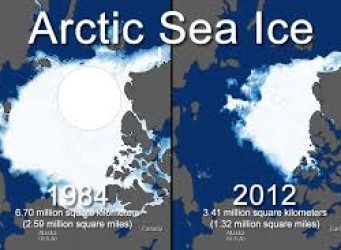And the hits just keep on coming… Every bit of data continues to confirm that humans are warming the planet by burning fossil fuels. The theory and computer models work. Even though there are still skeptics that refuse to accept this they are getting left in the dustpan of history.
What baffles me is why some very smart people continue to oppose the steps needed to address climate change? ALL of the benefits of transitioning off of fossil fuels to green energy are good for society and individuals. When will the Republicans in the Federal Congress get this? At least just about every other local government is moving ahead on abatement and adaptation. Thank goodness. There’s no time to waste.
New field experiments confirm climate models’ findings of a greenhouse effect
Gayathri Vaidyanathan, E&E reporter
Published: Thursday, February 26, 2015
Using real-world observations, scientists have confirmed that carbon dioxide is a greenhouse gas and does indeed lead to warming.
That result, though unsurprising, is remarkable because scientists have in the past relied on modeling and laboratory studies to make this point. Now they have proof from field experiments, as well. The results were published yesterday in Nature.
“Perhaps it does not have much impact because it validates what we had assumed, but it is good to have that validation,” said Kevin Trenberth, a climate scientist at the National Center for Atmospheric Research who was not affiliated with the study.
The study shows that between 2000 and 2010, as the concentration of carbon dioxide rose in the atmosphere due to fossil fuel burning, it warmed the Earth’s surface by 0.2 watt per square meter per decade.
That is comparable to the warmth emitted by a 60-watt light bulb over a 300-square-meter area over a decade, said Daniel Feldman, a climate scientist at the Lawrence Berkeley National Laboratory.
That’s in the ballpark that scientists had previously found for the warming effect of CO2. The scientists in this study computed their results to 99 percentile accuracy.
2 decades of data
Feldman and his colleagues were beneficiaries of an ambitious Department of Energy project in the 1990s to set up the Atmospheric Radiation Measurement (ARM) Climate Research Facility, which monitored atmospheric processes. At two facilities in Alaska and Oklahoma, scientists set up spectrometers, instruments that can detect CO2’s unique signals.
The instruments collected a wealth of data — daily records for almost 20 years at the Oklahoma site and 17 years at Alaska. The measurements were carefully calibrated by the National Institute of Standards and Technology.
“The measurement is the core of the study,” said Jim Mather, ARM technical director, in a statement. “Observing this effect took advanced measurements over a long period of time, and there are very few places where this is possible.”
The instruments detected the signal of CO2, a greenhouse gas that absorbs and reflects infrared rays reflected off the Earth’s surface. In the process, CO2 traps heat, leading to warming. The spectrometers could monitor CO2’s absorption of the rays, a signal that was unique to the gas and could not have come from other sources, Feldman said.
“This provides quite strong evidence that we’re changing the energy balance [of the planet] at the surface,” he said.
Trenberth said the scientists could have done the statistical analysis better, but, overall, “this looks like a very nice and thorough study.”



